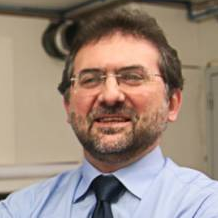Photochemistry in Organic Synthesis
A special issue of Molecules (ISSN 1420-3049). This special issue belongs to the section "Organic Chemistry".
Deadline for manuscript submissions: closed (31 March 2010) | Viewed by 95377
Special Issue Editor
Interests: catalysis and photocatalysis; chemical emergent systems for environment, energy, and fine chemistry; physical-organic chemistry; chemistry and materials science; spectroscopic techniques; advanced oxidation processes; solar fuels; nanotechnology and nanoscience; biophysics and biochemistry; chemical education and science communication; chemical engineering
Special Issues, Collections and Topics in MDPI journals
Special Issue Information
Dear Colleagues,
Photochemistry in Organic Synthesis concerns any type of useful chemical reaction that can by initiated by one electronic excited state of an organic molecule, generated after irradiation of a suitable system in the UV or visible region. In our days, because of environmental concerns, conversion to a highly functional compound by a photochemical useful reaction needs to be encompassed with a high selectivity to minimize waste. Thus, in this issue in addition to the traditional fields of electronic excited state reactivity and conventional photoinduced electron transfer activation, attention will be given to the enormous potential of photocatalysis as a tool for sustainable organic synthesis. Since radiation sources, optical materials and spectroscopic analytical tools are rapidly evolving, technological aspects as photochemical reactor engineering will be also covered.
Dr. Joaquim Luís Faria
Guest Editor
Keywords
- electronic photo-excited states
- energy transfer
- photocatalysis
- photochemical organic synthesis
- photochemistry
- photoinduced electron transfer
- selective photo-oxidation
- selective photo-reduction
- semiconductor photocatalysis






